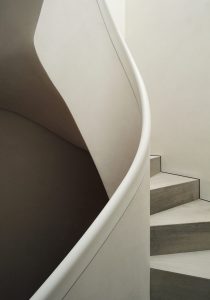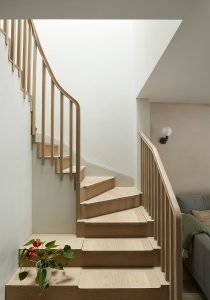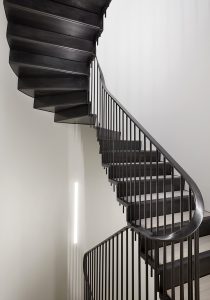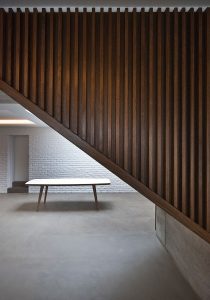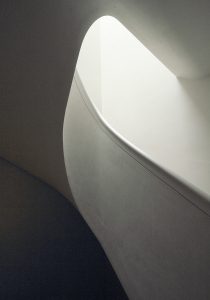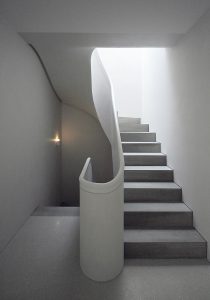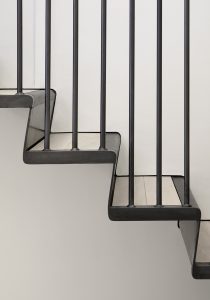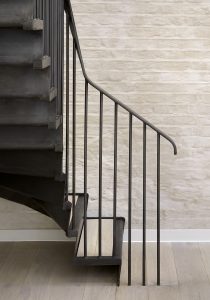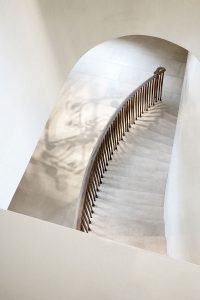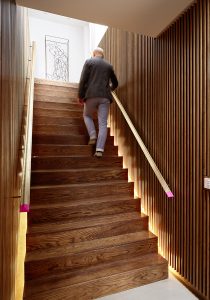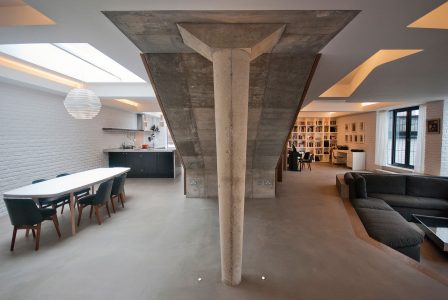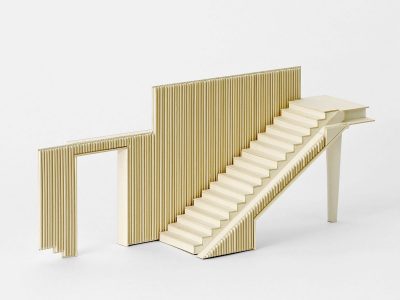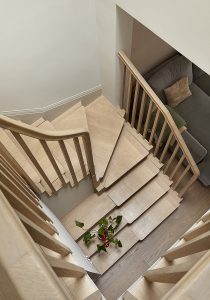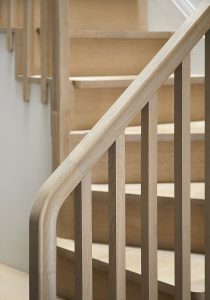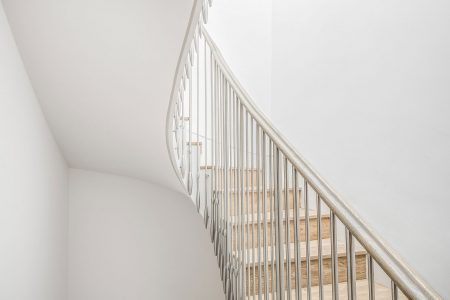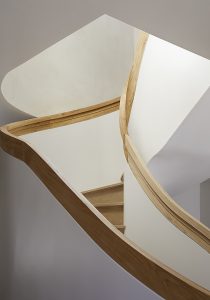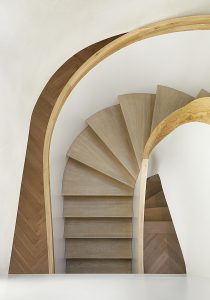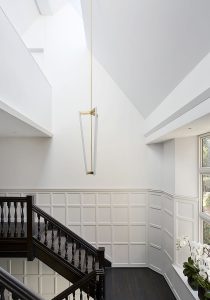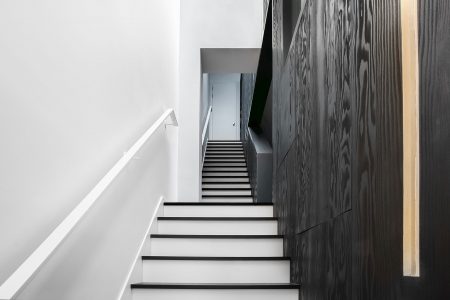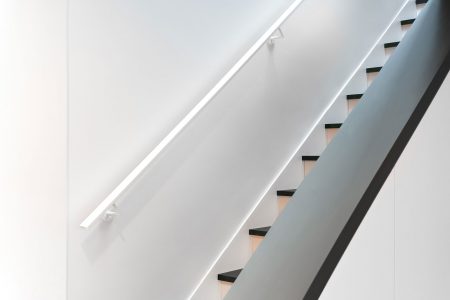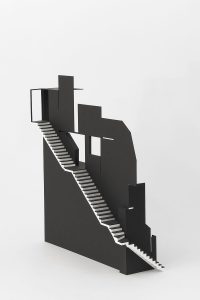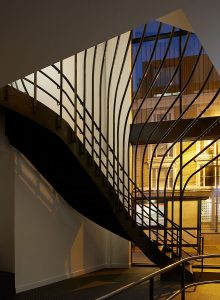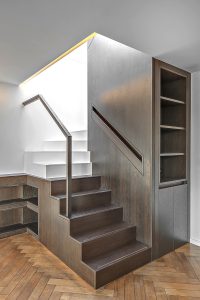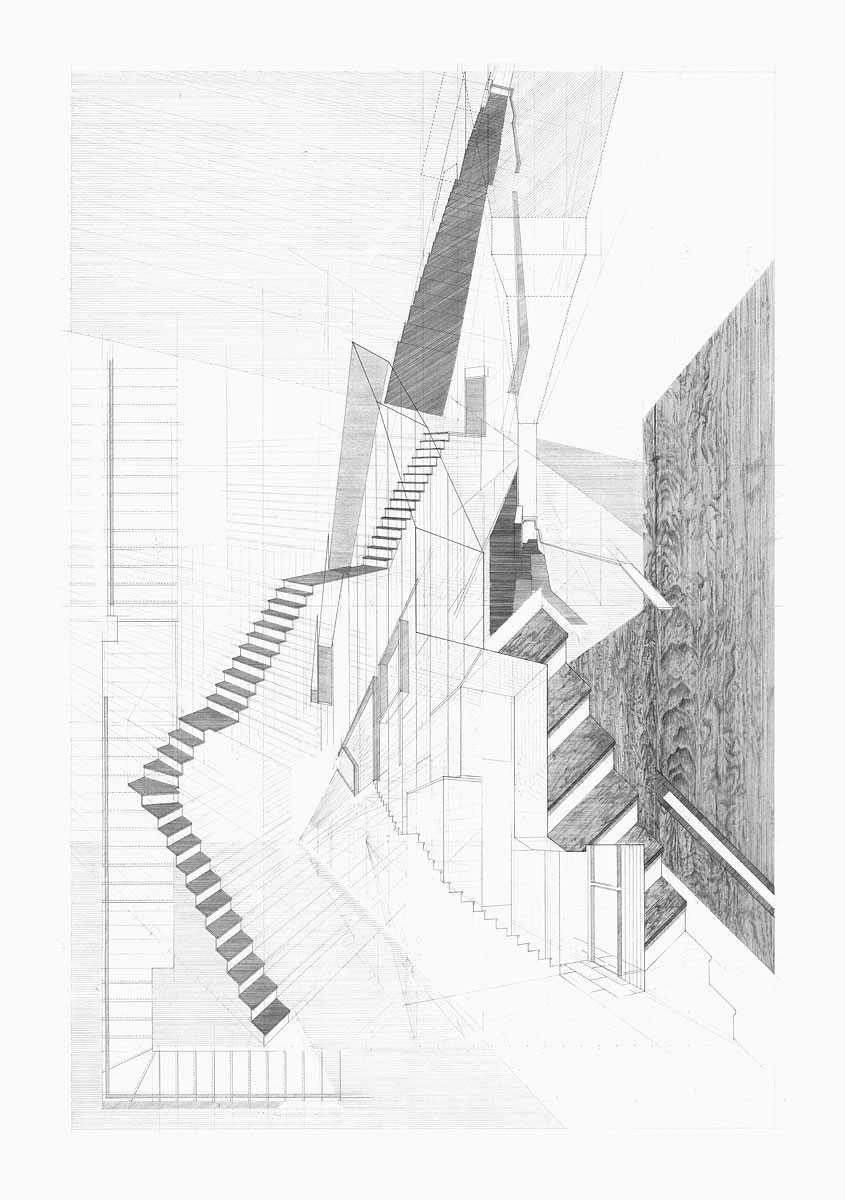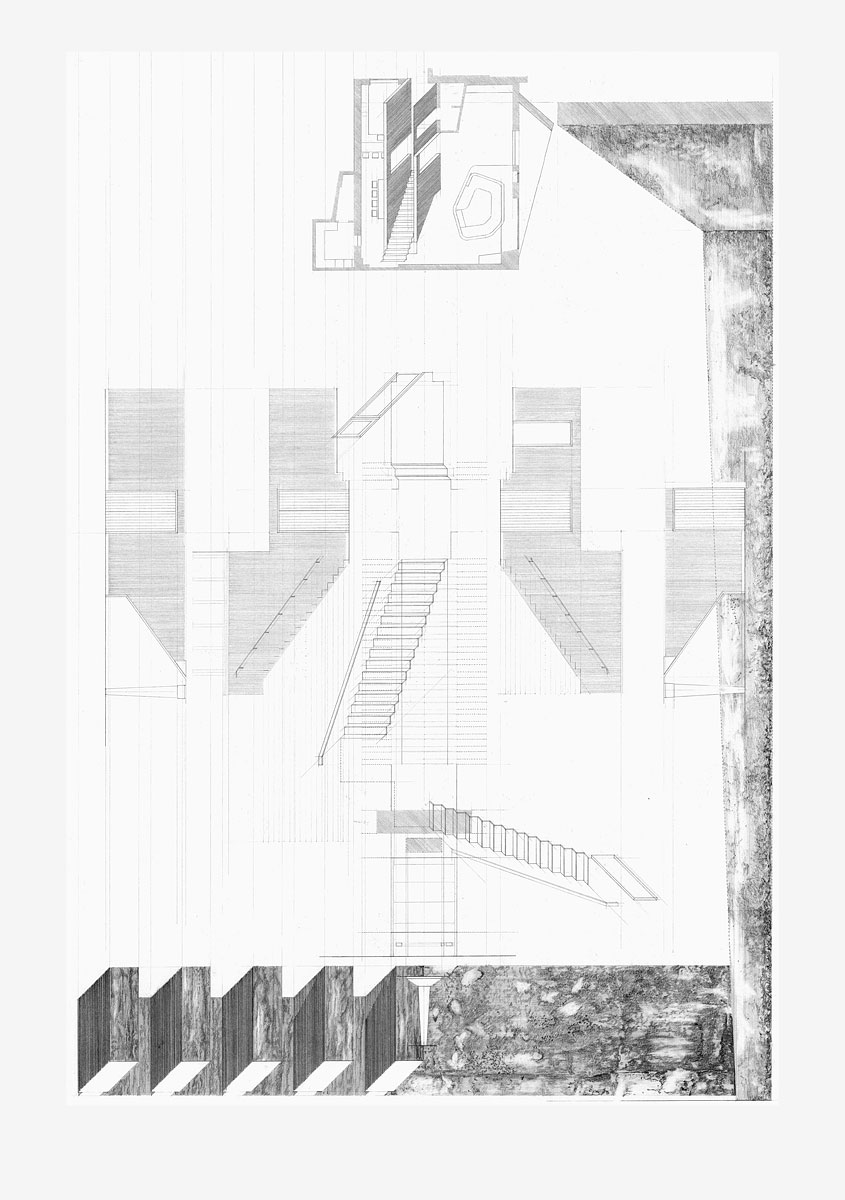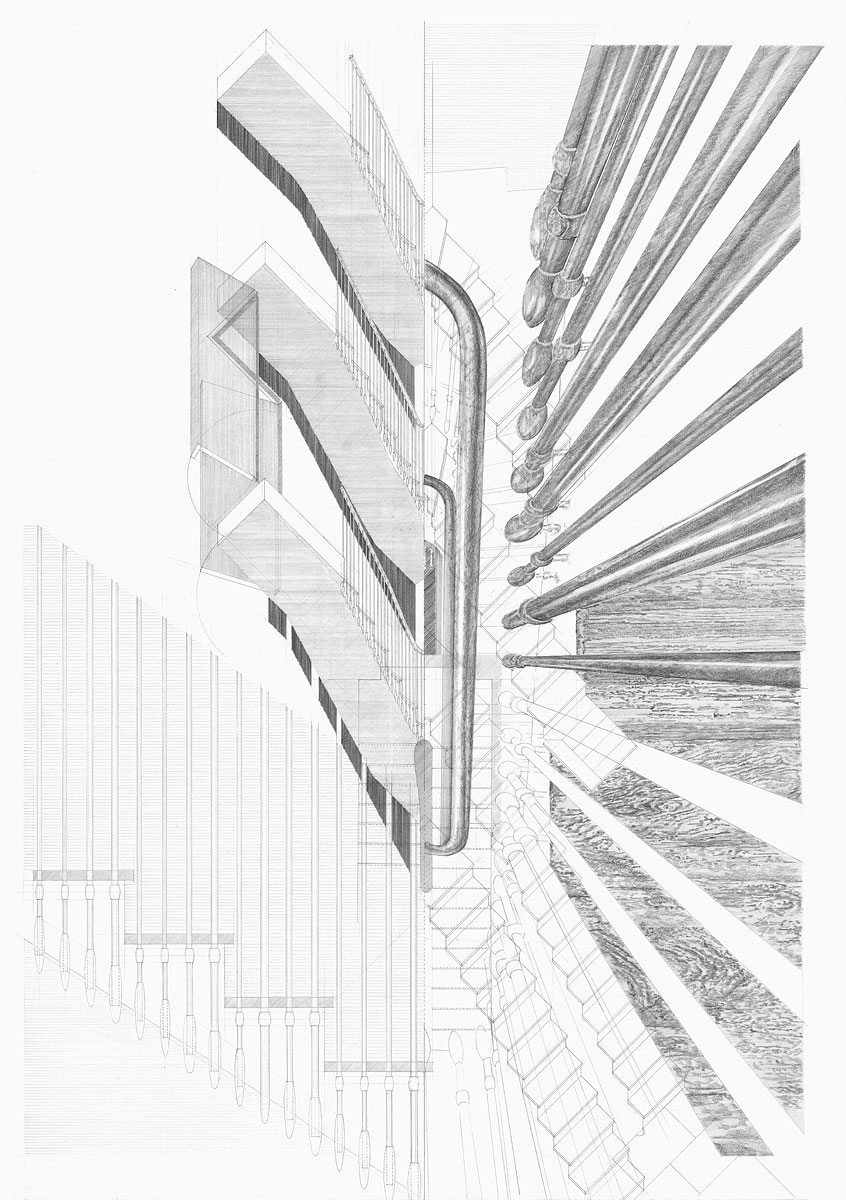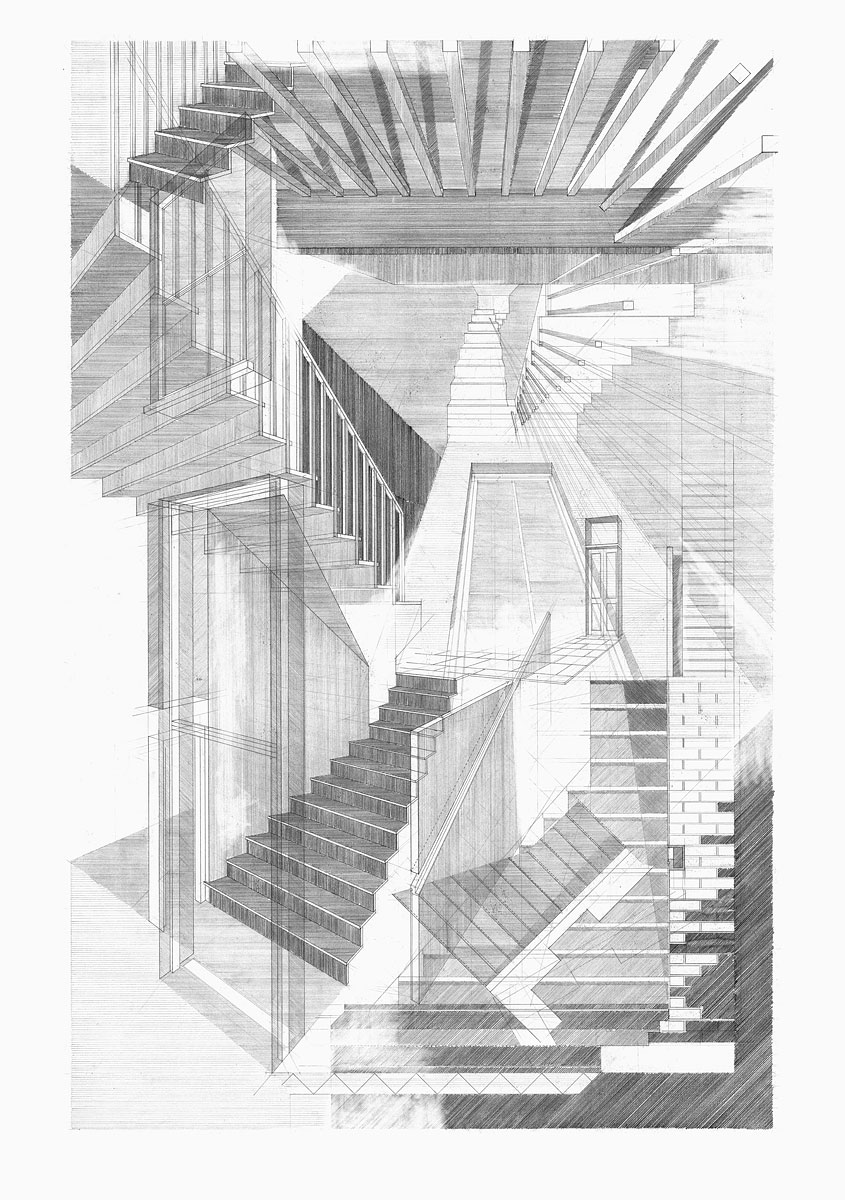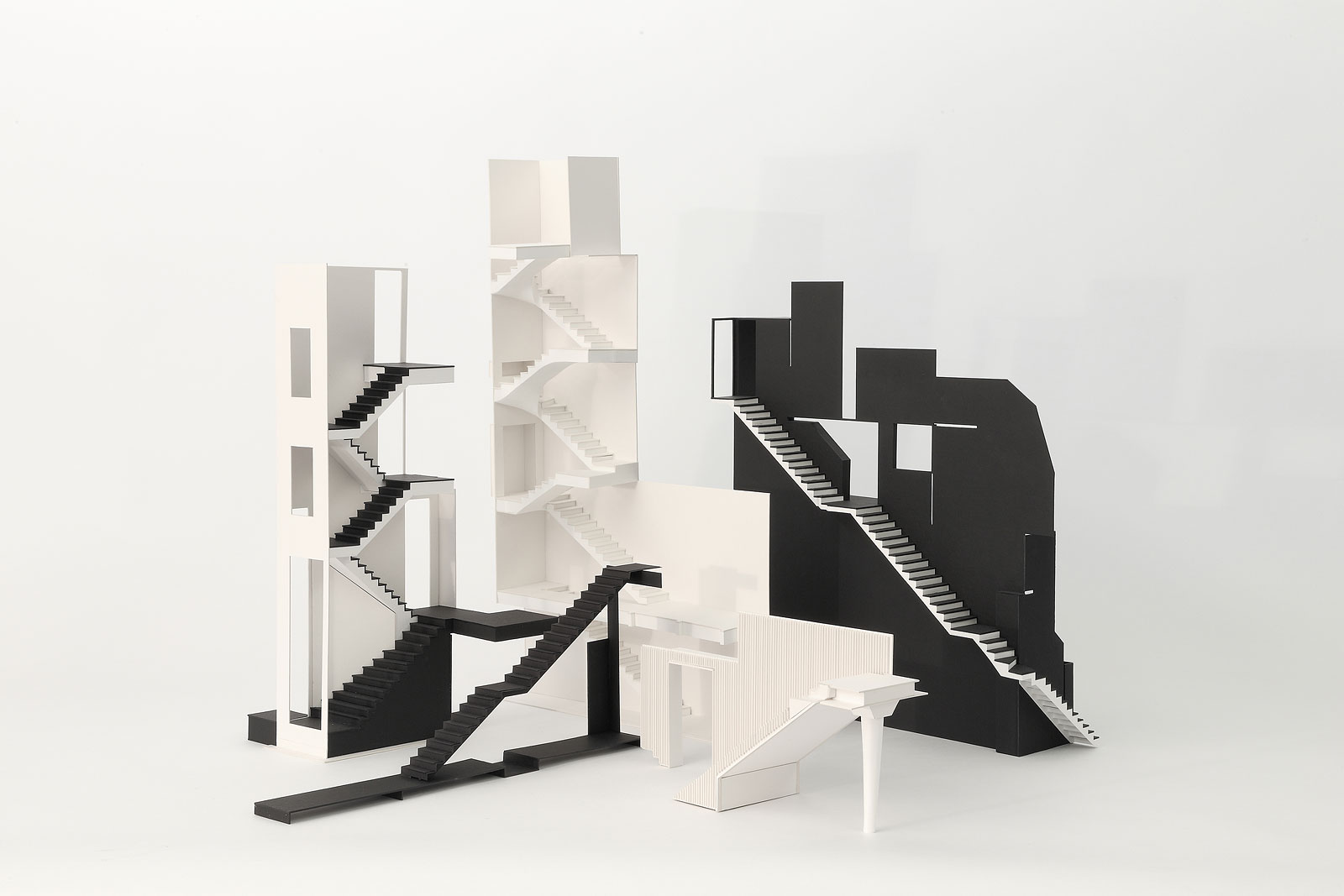ProjectsStaircases
We always enjoy the chance to develop a bespoke staircase design. Over the years Patalab have designed many staircases - from the German Embassy’s garden access steps to a flight of stairs that is more like a detailed piece of bespoke timber and concrete furniture at the centre of a renovated garage. Bespoke staircase design provides us with the opportunity to radically transform the layout of a building as well as create a feature that can increase property value and enhance the character of a building.
Staircases as Beautiful and Fascinating Objects
A bespoke staircase design is the culmination of many considerations. It is primarily utilitarian, facilitating access between levels, but something in the carefully calculated proportion and rhythm of the steps, the way it travels in a diagonal or curve, eccentric in rooms of walls, floors and ceilings perpendicular to each other, makes it into a beautiful and fascinating object.
UK Building Regulations require that all steps negotiating a level change of over 60cm in a house are provided with guarding to either side, yet the name of this element, the balustrade, originates in the Italian word for pomegranate flower. This hidden poetry in Approved Document K of the Building Regulations is due to the 17th century style of guarding - the name has endured even if the bulbous stone railings are reserved for ornate listed buildings, palaces and grand parks.
Modern balustrades can be simpler, fusing with the handrail to form solid sweeps and spirals that sit like an Anish Kapoor sculpture in the centre of a room. The elegant form can distract you from the fact that the staircase is confined to a limited amount of space. Or perhaps this object is languorous, slowly moving through space, designed to impress and cinematically deliver hosts descending to greet their visitors.
Staircases as Elongated Thresholds
Material choice is an important consideration. The handrail should feel comfortable as it leads you between living space and bed, and at the same time, the transition under foot between steps and level floor should be planned. Aside from tactility, materiality repeated can enhance connection between spaces. Is your living space split over two levels? Or is the master bedroom located two floors below the children's rooms? Staircases can separate when required, but they can also unite - although the flight of stairs crosses several stories its repetitious use of components and surfaces creates continuity, an elongated threshold.
Staircases to Orchestrate Space
Connectivity can be increased by paying attention to lateral openings in floors and in voids around stairs. Offsetting staircase and wall or creating a well in the centre of the stairs encourages a visual and audio connection. As well as human presence, these apertures also allow lower floors to be animated by the sky - imagine a rooflight filtering sun light down to the ground floor via voids around the staircase, daylight focusing in and out, the shadow of the slim railings that form the balustrade softening and sharpening as clouds pass between sun and roof opening.
A small sacrifice of floor space can mean that your two storey terraced house can offer a moment belonging to a different scale of building - a triple-height space at the centre of your Victorian workers cottage. Maybe this is an opportunity to suspend a pendant light and nocturnally increase drama.
Patalab starts to consider these details when we begin our feasibility studies. Although we initially work in plan, we imagine the entire space, working into these ideas sometimes in models or conceptual drawings when we have the chance.
Publications
Patalab staircases have been widely published and exhibited. Here you can find more information:
- Exhibition Senitive Geometries
- "Good going", an article about our stair at 141-143 Shoreditch High Street, London
- "Long Staircase spans converted London apartment", an article about Cascade House

